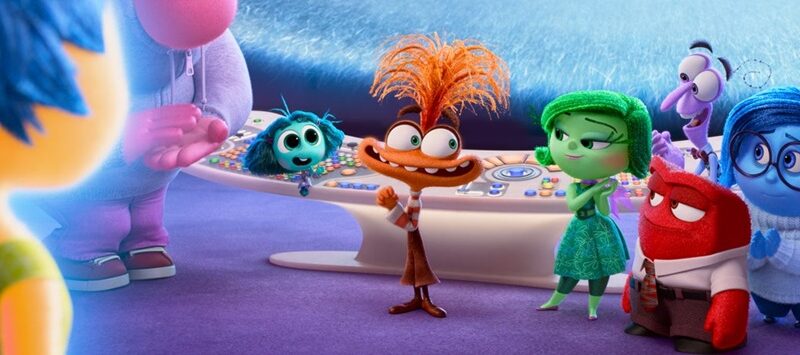Inside Out 2 (Mann, 2024)
I spent most of Inside Out 2 trying to convince myself that it was significantly better or worse than what my gut was telling me, wondering how a film this polished and executing so well (particularly in the third act) was leaving me less satisfied than such successes typically do.
The best answer that I can give is that I do not like allegories. Allegorical narratives or characters are good at enacting platitudes, but they are less successful at embodying ambiguity or paradox than are more realistic, traditional narratives. In movie terms, there are two narratives going on here. One — that of Riley hitting puberty and trying to figure out how to navigate an increasingly complex world — resonated and engaged me deeply. The other — that of Joy, Sadness, and Anger trying to recover Riley’s true self and wrestle control of her heart and body from Anxiety and Ennui is, like most allegories, flat and generic. A story of complex decisions is internally symbolized by a generic journey to push that button or find the MacGuffin item.
This point comes into sharper focus when one compares the two Inside Out films to the Pixar titles they most resemble structurally, Toy Story and its sequels. While the franchises share the conceit of backgrounding the human narrative in order to comment on it indirectly through the toys and emotions, the clearest difference is that Buzz, Woody, Jessie, and company have sufficiently rounded characters to invest their narratives with stakes of their own. Not so Joy, Sadness, and Anxiety. To be fair, I think Inside Out 2 realizes this and thus gives the human narrative more screen time rather than pushing it into the background entirely. Also, the first Inside Out made up for the thin nature of the narrative by awing us with art design. The colors and architecture had wonderful features to soak in even if the world-building rules were as fuzzy as those of an MCU film.
If that was all there was to it, I would call Inside Out 2 a serviceable if forgettable film. But Riley’s story has enough weight to drag her pedantic subconscious to the winner’s circle. Here the stakes have understandable consequences, and the film’s messaging is more emotionally satisfying than are most triumphalist endings to animated or adolescent fare. I felt as though I was watching two different movies competing for screen time, one eliciting a two-star shrug, the other making me tear up and putting a lump in my throat. I will split the difference and call it solid and entertaining (warts and all), but not a masterpiece.
Postscript: The theater I saw the film in was full and I heard and saw several smaller kids who were upset rather than delighted. Given how abstract allegories are, I suspect this was not because they understood what was happening to Riley within the narrative context but because the sound was loud, imagery intense, and emotions heavy. For example, a scene in which Riley has a panic attack could look like she is in physical danger to a child who did not understand what was happening to her. I typically find IMAX theaters too loud anyway, but I would recommend some caution if the whole family includes kids under say, ten, and I might wait to screen it for the toddlers until I could do so in a setting where I could adjust the volume or pause the film if they start getting worked up.

